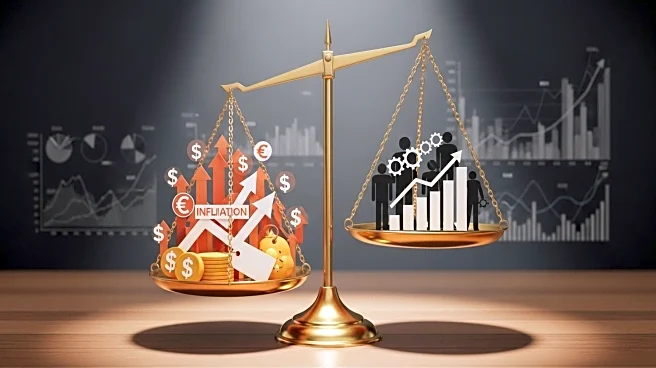What's Happening?
The Federal Reserve's favored inflation gauge, the personal consumption expenditures (PCE) price index, rose by 2.7% in August, slightly higher than the previous month. Core PCE inflation, excluding food and energy, remained at 2.9%. Despite the increase, the Fed proceeded with a rate cut last week, the first of the year, to address a weakening job market. However, the Fed remains cautious about further cuts, considering the impact of President Trump's tariffs on inflation and the broader economy.
Why It's Important?
The rise in the Fed's preferred inflation measure highlights the ongoing challenge of managing inflation while supporting economic growth. The Fed's decision to cut rates reflects concerns about employment, but persistent inflation may limit the scope for additional easing. The situation underscores the complexity of monetary policy in the current economic environment, where external factors like tariffs play a significant role. The Fed's actions will have implications for businesses, consumers, and financial markets, influencing borrowing costs and economic activity.
What's Next?
The Fed will continue to monitor inflation and employment data to guide its policy decisions. The impact of tariffs on inflation and the economy will be a key consideration in future rate decisions. Market participants will be watching for any signals from the Fed regarding its policy direction, particularly in light of mixed economic data. The Fed's cautious approach suggests that further rate cuts will depend on clear evidence of economic weakening or a significant drop in inflation.











